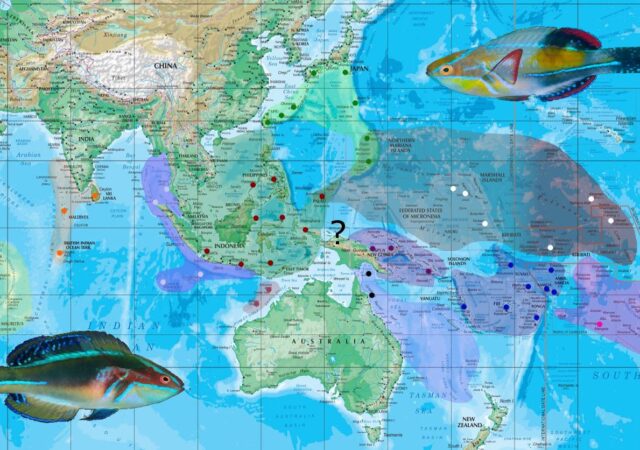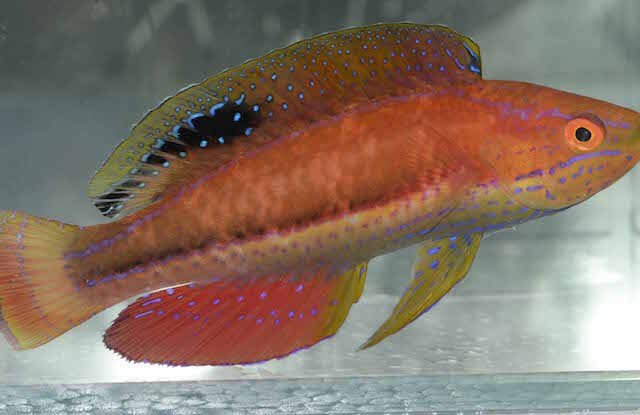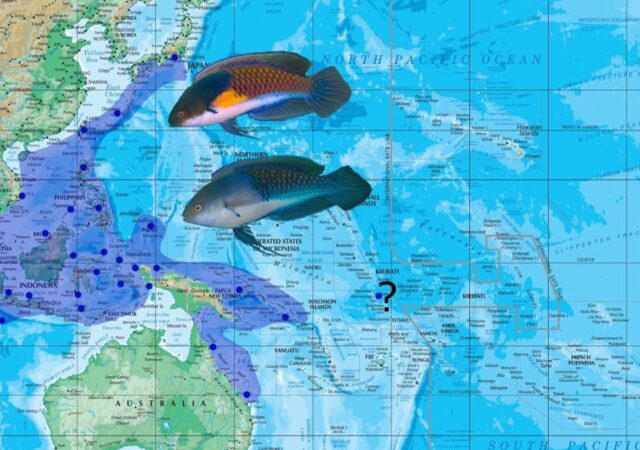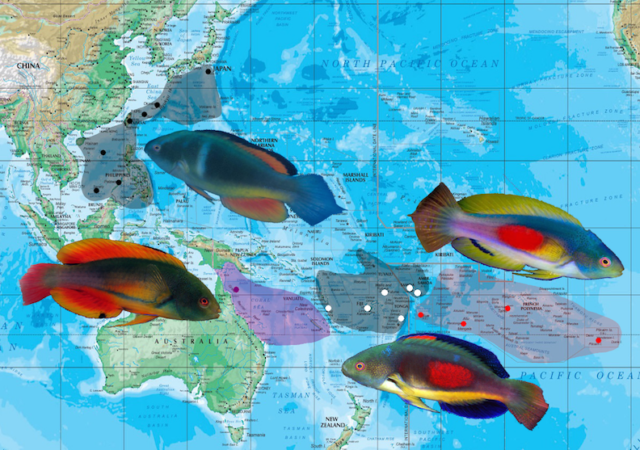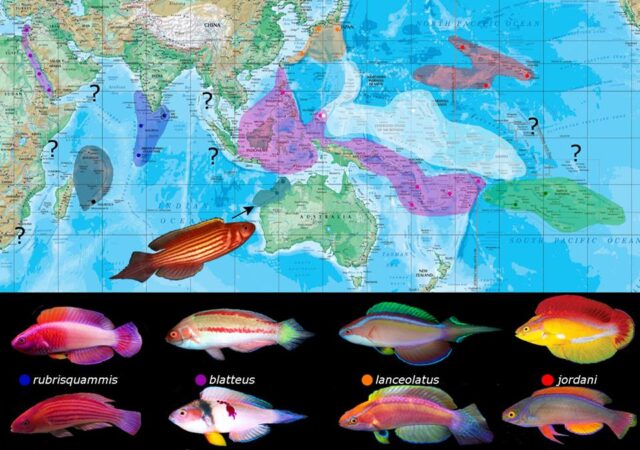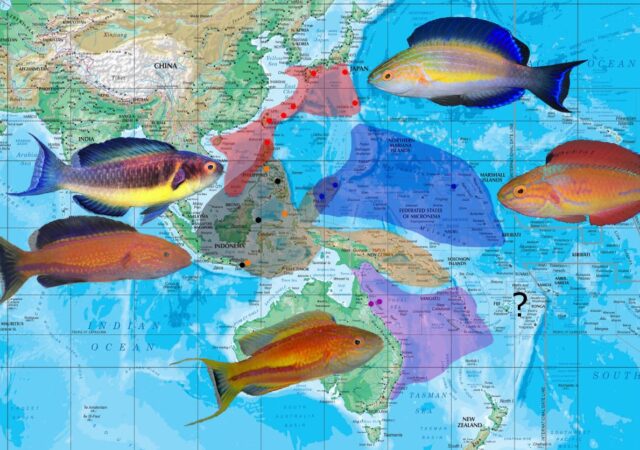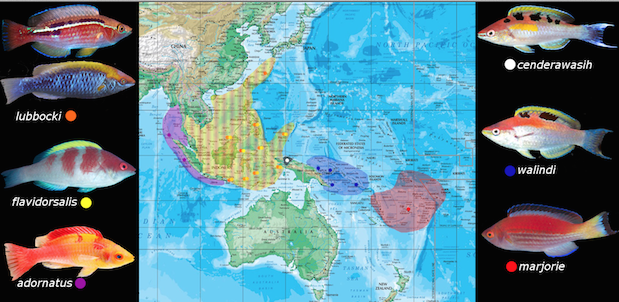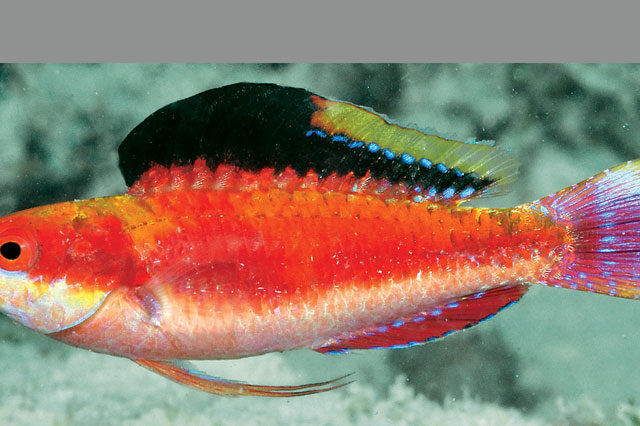The rubrimarginatus group is home to some of the most well-known (and well-loved) of the Fairy Wrasses. The group can be divided rather equally into two clades, each with their own separate diagnostic features. The males attain fairly large sizes,…
fairy wrasses
2.3 Fairy Wrasses: The exquisitus complex
Cirrhilabrus exquisitus is an unusually widespread and variable species which appears to form a lineage alongside the scottorum and cyanopleura groups, with all three sharing characteristically mid-length pelvic fins. Unlike any other species of Cirrhilabrus, the Exquisite Fairy Wrasse has…
Is Japan really home to any endemic Fairy Wrasses? Cirrhilabrus katoi disagrees
The reefs of Japan are known to harbour unique fauna found nowhere else on this earth. Rife with endemics, species such as Centropyge interrupta, Chaetodon daedalma, Genicanthus takeuchii, Chromis mirationis and a whole hodgepodge of other reef fish call this…
2.2 Fairy Wrasses: The cyanopleura group
The cyanopleura group is the next collection of fairy wrasses from the second major Cirrhilabrus clade (whose member taxa share the trait of mid-length pelvic fins) and is sister to the scottorum group. In the latter, certain traits that were diagnostic to the members will be…
2.1 Fairy Wrasses: The scottorum group
Moving away from the first major Cirrhilabrus clade, we explore the various species groups that differ by having larger and longer pelvic fins. The scottorum group is a small conglomeration of two confirmed species, one of which is highly polychromatic…
1.2 Fairy Wrasses: The lunatus group
Cirrhilabrus johnsoni was first described in 1988 based on specimens collected in the Marshall and Caroline islands. This small species served as the twentieth member of a rapidly expanding genus, and was decidedly different with a crescent shaped caudal fin adorned…
1.1 Fairy Wrasses: The lubbocki group
The lubbocki group houses six members divided evenly into two separate but closely related clades. They are the lubbocki clade and the marjorie clade. All members of this group are small to medium sized species with a recurring red and white…
Cirrhilabrus marinda, a cryptic new species of fairy wrasse similar to C. condei
Cirrhilabrus marinda is the newest species of fairy wrasse to be described, with the new fish being a very close offshoot of the common aquarium favorite, Cirrhilabrus condei. Marinda’s fairy wrasse looks very similar to Conde’s fairy wrasse with a nearly identical…
0.0 Fairy Wrasses: A review of the genus Cirrhilabrus
Fairy wrasses are some of the most ubiquitous fishes in the marine aquarium trade, which is why it may come as a surprise to learn that the group has never received a serious taxonomic review. The scientific literature is filled…



